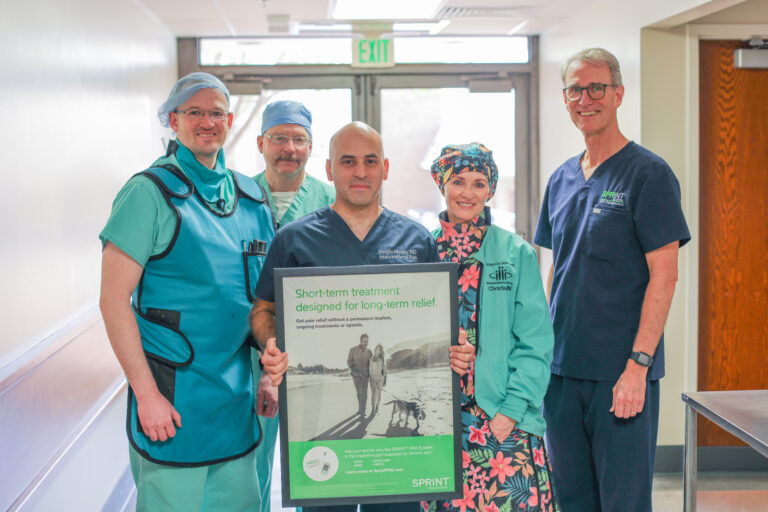
Stretching Savvy for the Recreational Athlete
As summer is in full swing in east Idaho, this means more people are spending time outdoors participating in a wide variety of recreational activities, such as swimming, hiking, cycling, and running. Are you and your loved ones taking all of the necessary precautions to prevent minor to severe injuries? You get a gold star if stretching is a regular part of your workout routine, but are you doing it right?
Warm-weather athletes can benefit from new research about stretching. Static stretching, the traditional way of holding a stretch for 20 to 30 seconds, can actually do more harm than good, according to University of Nevada at Las Vegas researchers. They found that static stretching resulted in weaker leg muscle force.
Here are four other common stretching mistakes and tips for fixing them from Jared Kam, MD, sports medicine and family physician at Bingham Memorial’s Orthopedic Institute.
MISTAKE #1: BOUNCING
The Fix: Adding a light bounce during a stretch increases risk of injury. “It can cause you to go beyond what is appropriate for your current flexibility level,” says Dr. Kam. Bouncing overstretches tendons and ligaments, making them less stable. Hold still during a stretch and maintain the position for up to 60 seconds.
MISTAKE #2: STRETCHING BEFORE A WORKOUT
The Fix: It may seem like the best way to ease your muscles into a workout, but “muscles that are not warm are like a rubber band that’s been in a freezer,” Dr. Kam explains. “It’s best to gradually warm the muscles up before stretching. Cold muscles can be injured by vigorous stretching.” Do five to 10 minutes of light cardio, such as walking or cycling, then stop to stretch before resuming your workout.
MISTAKE #3: HOLDING YOUR BREATH
The Fix: In addition to causing lightheadedness, holding your breath during a stretch could interfere with your progress. Instead, take slow, deep breaths, which will help you hold the position longer and more deeply. “You’ll be able to stretch further because you’ll be feeling more relaxed,” Dr. Kam says.
MISTAKE #4: STRETCHING TOO DEEPLY
The Fix: When it comes to stretching, the adage “no pain, no gain” is false. Pain could be a sign that you’re pushing yourself too far or doing the stretch incorrectly. Ease up on the stretch to see whether the pain disappears. If it persists, ask a trainer or your healthcare professional about proper techniques. “Pain during stretching means that there could be an area of injury in that muscle group or joints,” Dr. Kam says.
To be safe and help prevent injuries while engaging in outdoor activities, please be sure to do light aerobics to warm the entire body. Then practice sport-specific, dynamic stretching to ease muscles while they are in motion.
- Runners should do squats and lunges.
- Tennis, basketball and soccer players should prepare to move quickly in different directions by doing a lunge-like crawl on all fours across the floor—like Spider-Man on a wall.
SOMETIMES INJURIES ARE UNAVOIDABLE
As with any sport, risks and injuries are sometimes unavoidable. Pain in your hip, thigh, leg, ankle, or foot all have non-invasive treatment options, if addressed early.
- Are you experiencing a dull or achy pain behind the knee cap?
- Have you heard your hip make a repeated snapping noise? Does it cause bouts of pain?
- Do you experience elbow or shoulder pain that occurs at night or while resting, or that has been occurring for longer than a week?
- Are you experiencing persistent foot swelling that hasn’t improved after two to five days of home treatment?
- Have you had ongoing numbness or tingling in your hand or wrist, or do you have trouble making a fist or holding objects?
- Are you missing out on life because of knee, hip, or other joint pain?
By avoiding your doctor when joint pain begins, not only can you affect your performance long-term, but you place yourself at risk for serious complications that may require surgery.
The doctors at Bingham Memorial’s Orthopedic Institute are experts in surgical and non-surgical pain relief and can help you get back to living the life you love. If you have health related questions, learn more about the doctors at Bingham Memorial’s Orthopedic Institute by visiting www.EastIdahoOrtho.com.
CALL TO SCHEDULE A FREE CONSULTATION FOR JOINT PAIN
Jared Kam, MD, is a fellowship-trained, sports medicine and family medicine physician. As a specialist in sports medicine, he is able to treat injuries sustained by sports and recreational activities. He helps athletes get back in the game, whether they’re recovering from sports injuries, concussions or illness as well as injuries or troubles that occur from simply living life. Dr. Kam is member of the Orthopedic Institute, east Idaho’s largest group of physicians.
Dr. Kam has offices in Idaho Falls and Pocatello. To schedule an appointment, you can call 1-888-362-4552.
Return to Articles


